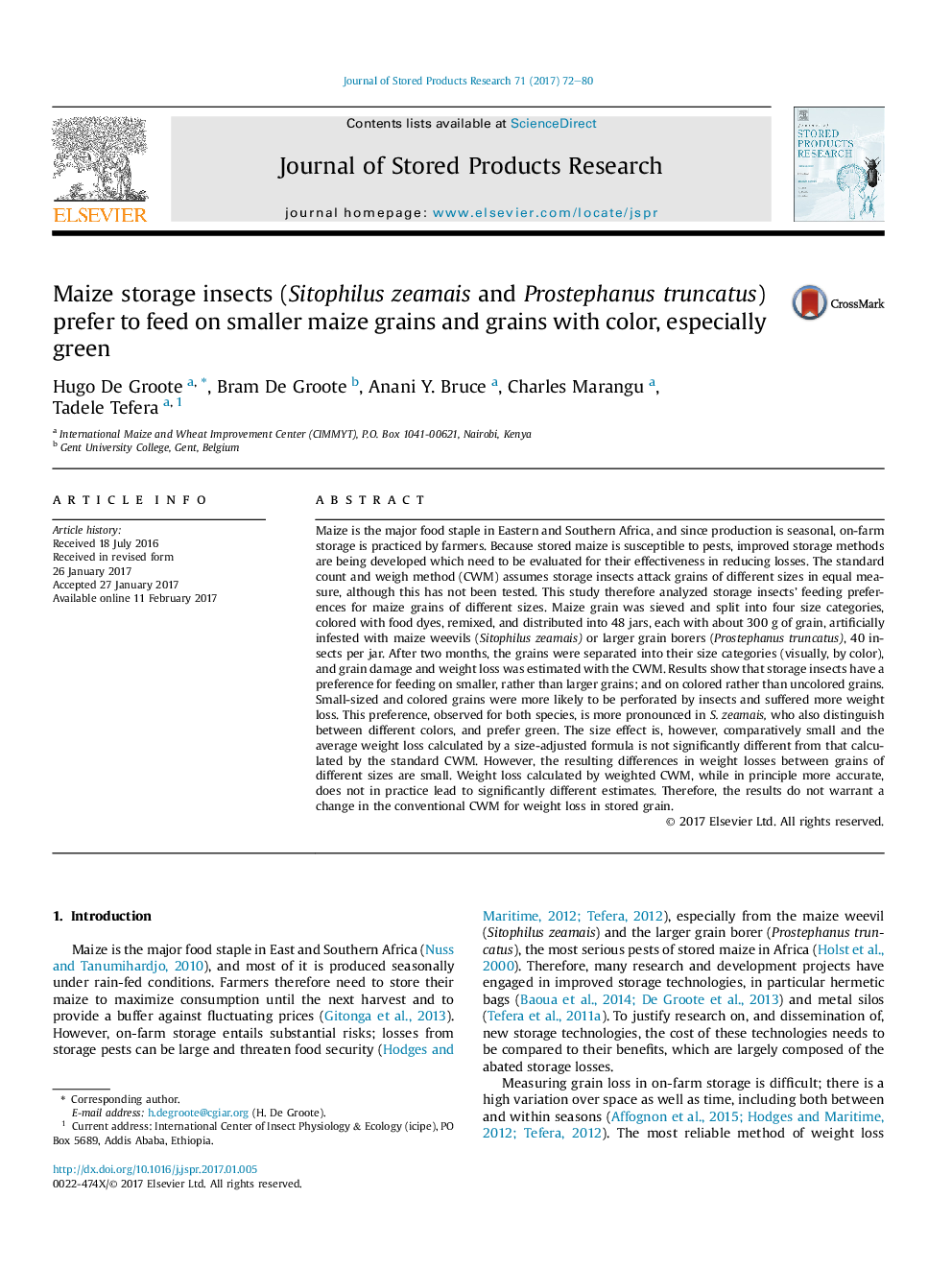| Article ID | Journal | Published Year | Pages | File Type |
|---|---|---|---|---|
| 5762589 | Journal of Stored Products Research | 2017 | 9 Pages |
â¢Two insect storage pests prefer to feed on smaller maize grains over larger grains.â¢Smaller grains suffer high losses from maize weevil and larger grain borer.â¢Storage insect pests prefer maize grain colored with food dyes over uncolored grain.â¢Maize weevils prefer to feed on green-colored maize grains over red or blue.â¢The size effect is small and therefore does not warrant a change in loss assessment methods.
Maize is the major food staple in Eastern and Southern Africa, and since production is seasonal, on-farm storage is practiced by farmers. Because stored maize is susceptible to pests, improved storage methods are being developed which need to be evaluated for their effectiveness in reducing losses. The standard count and weigh method (CWM) assumes storage insects attack grains of different sizes in equal measure, although this has not been tested. This study therefore analyzed storage insects' feeding preferences for maize grains of different sizes. Maize grain was sieved and split into four size categories, colored with food dyes, remixed, and distributed into 48 jars, each with about 300 g of grain, artificially infested with maize weevils (Sitophilus zeamais) or larger grain borers (Prostephanus truncatus), 40 insects per jar. After two months, the grains were separated into their size categories (visually, by color), and grain damage and weight loss was estimated with the CWM. Results show that storage insects have a preference for feeding on smaller, rather than larger grains; and on colored rather than uncolored grains. Small-sized and colored grains were more likely to be perforated by insects and suffered more weight loss. This preference, observed for both species, is more pronounced in S. zeamais, who also distinguish between different colors, and prefer green. The size effect is, however, comparatively small and the average weight loss calculated by a size-adjusted formula is not significantly different from that calculated by the standard CWM. However, the resulting differences in weight losses between grains of different sizes are small. Weight loss calculated by weighted CWM, while in principle more accurate, does not in practice lead to significantly different estimates. Therefore, the results do not warrant a change in the conventional CWM for weight loss in stored grain.
Graphical abstractDownload high-res image (405KB)Download full-size image
